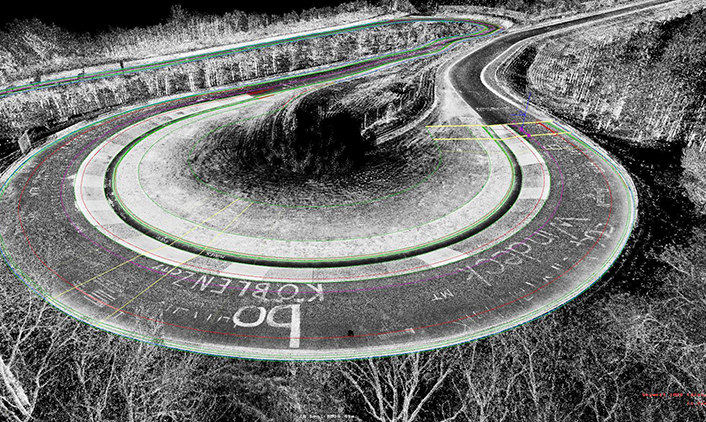Circuits with Circuits: New Dogs, Old Trick

One of the biggest complaints that fans have with contemporary tracks is that they lack character. But what does it mean for a racetrack to have character? Is it something that can be designed from the onset or is it a trait that is acquired over time? Will the boring, featureless tracks of today be considered to be filled with personality fifty years down the line? Below are the stories of how some of the classic tracks came to be and why they are so special. Hopefully I can take some of what I learned from the Old Tracks and influence the current circuit design process.
The Classics
Monza

Known as the Temple of Speed, Monza was designed as a performance track, allowing cars to thunder down without having to change directions or brake. The track featured a baking with an 80% gradient, allowing cars to maintain speeds of over 175 mph along the entire circuit. Although the banking is no longer raced on (due to safety concerns), Monza retains it high speed nature. Corners such as Curva Grande and Parabolica recreate similar sensations to those felt by Fangio and Moss in the 50s and 60s. Add in a passionate “tifosi” and fan proximity to the circuit and it is easy to see why Monza is a cornerstone of the F1 calendar.
Monaco

The Automobile Club de Monaco had a problem. In order to be recognized as a premiere automotive club, they had to host a race within their territory. A race within the twisty confines of the small principality seemed an impossible task but Anthony Noghès was up to the challenge. Together with Louis Chiron and Jacques Taffe, he created the most iconic circuit in Formula 1 history. Drivers have to negotiate a tight, close track, with blind corners and barriers a few milimeters away. Its hard to overtake around Monaco but when a driver does have the guts to get past his colleague, he is immediately lauded a hero. The Monaco GP is the only track that has featured in every single F1 Season and you can’t imagine one without the other.
Spa Francorchamps

If you ask both fans and drivers what their favorite F1 circuit is, Spa-Francorchamps will be at the top of both lists. In 1920, Jules de Thier and Henri Langlois Van Ophem created race track using the roads between Francorchamps, Malmedy and Stavlot. The roads featured fast sweeping corners and the hills in the region gave Spa its signature roller-coaster feel. Although the modern track is significantly shorter and less fearsome than the original (even the mention of “Masta” will still send shivers down Jackie Stewarts’ spine), it still contains one 180 mph+ corner after the other, the best of them being Eau Rouge. As Fernando Alonso explains “You come into the corner downhill, have a sudden change [of direction] at the bottom and then go very steep uphill. From the cockpit, you cannot see the exit and as you come over the crest, you don’t know where you will land.” Every other circuit would give anything to have a corner half as good as that.
Silverstone

At the end of WWII, Great Britain had many abandoned airstrips and not many race tracks. In 1947, Frazer Nash and his friends went to one such airstrip hoping to find a space to race. The airstrip, of course, was Silverstone. Soon, more and more amateurs flocked to the track for a chance to rev their engines and squeel their tyres. Eventually, the Royal Automotive club got involved and Silverstone held its first race; the track lined with 170 tonnes of straw bales. Fast forward 70 years and Silverstone is seen as the home of Formula 1, with 8 out of 11 teams based within an 80 minute drive of the circuit. The track itself provides a challenging mix of high speed corners, heavy braking zones and long straights. Mix in the gloomy English weather and you have a grand prix that never fails to excite.
Circuit Gilles Villeneuve

When Roger Peart received a call in Late 1977, little did he know that half an hour later, he would have laid down the foundations for an F1 circuit. The president of the Candian Automobile club had asked Peart to consider if and where Montreal could build an F1 track. 30 minutes later, Peart confirmed that the city could hold a grand prix, at the Ile Notre Dame. The track is sandwiched between the lake at the center of the island and the river surrounding it. This forces the track into an elliptical shape, with high speed straights and hard braking zones, straining both the car and the driver, while providing great racing for the fans. All the ingredients for an instant classic.
Suzuka
When Soichiro Honda saw the Suzuka Circuit, originally commissioned to be a test track for Honda’s vehicles, he felt it would be unfair of him to deprive the world of this fantastic race track and duly opened it up for racing. Honda’s factory was surrounded by a hilly area populated by rice fields and designer Hans Hugenholtz saw an opportunity to create a layout that would require moving the least amount of dirt. The result was a fast flowing racetrack that punished drivers for even the slightest of mistakes. The final design features the only crossover on the F1 calendar but its corners like the Esses, Spoon, and 130R that lend Suzuka its legendary status. Over the years, the tack has hosted some of the most dramatic GPs and long may that continue.
Lessons
None of the designers of ‘the classics’ had a blank canvas to design their race track. They were constrained either by the land the track was built on, pre-existing roads, or specific objectives set by the group responsible for the design. Each designer had to come up with creative solutions for track design in order to create a racing circuit using what he had at his disposal. Rather than hindering the process, the constraints led to unique solutions that gave each circuit a distinctive personality.
I am going to explore how artificial limitations can be introduced early on in the track design process and force designers to think outside the box. It will be important to make sure these limitations don’t feel gimmicky or force impossible solutions that are not viable in the real world. With the aid of computation, I hope to create tools that enable track designers to create the next Suzuka or Spa-Francorchamps
Sources
- https://www.formula1.com/en/latest/features/2015/9/high-risk–high-interest—a-brief-history-of-italian-banking.html
- http://www.aboutmilan.com/history-of-monza-track.html
- https://acm.mc/en/automobile-club-de-monaco/history/the-automobile-club/
- https://en.wikipedia.org/wiki/Circuit_de_Spa-Francorchamps
- http://www.bbc.com/sport/formula1/23048643
- http://www.topgear.com/car-news/motorsport/history-silverstone-circuit
- http://www.autofocus.ca/news-events/features/how-circuit-gilles-villeneuve-was-born-in-a-half-hour
- http://www.vivaf1.com/blog/?p=8052


Leave a Reply